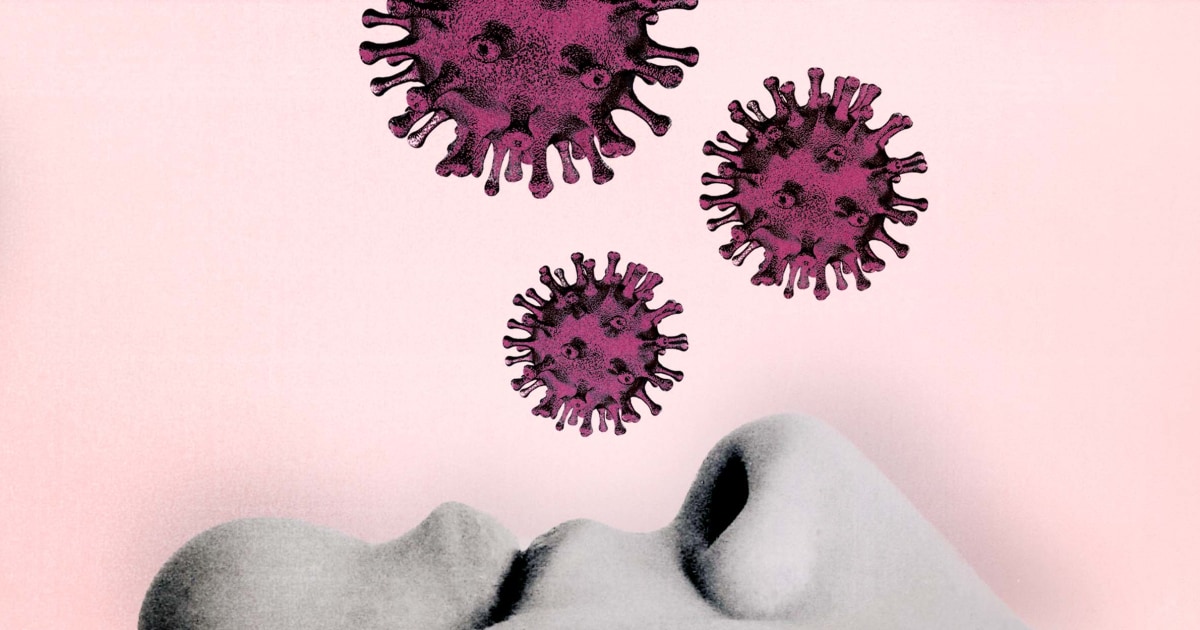Hispanic, Black Adults More Likely to Report Long COVID-19 … – U.S. Census Bureau
An official website of the United States government
Here’s how you know
Official websites use .gov
A .gov website belongs to an official government organization in the United States.
Secure .gov websites use HTTPS
A lock ( ) or https:// means you’ve safely connected to the .gov website. Share sensitive information only on official, secure websites.
Hispanic and Black respondents were more likely than other racial or ethnic groups to report COVID-19 symptoms lasting three months or longer, according to the U.S. Census Bureau’s Household Pulse Survey (HPS).
The HPS, an experimental online survey representative of the U.S. adult population at the state and national level, began asking about long COVID symptoms in June of 2022, more than two years after the pandemic hit the United States. It found that 31.1% of respondents ages 18 and over reported long-lasting symptoms.
Findings are based on responses collected from June to December 2022. See the technical documentation for more information about the HPS.
Women were more likely than men to say they suffered long-lasting symptoms.
Respondents were asked if they had ever tested positive for or had been told by a health care provider they had COVID-19. Respondents who answered “yes” were then asked if they had symptoms they did not have pre-COVID-19 that they still experienced at least three months later.
The HPS data tool allows users to explore a number of different national, state and metro area estimates, including the percentage of adults who experienced long COVID symptoms.
This story delves deeper into the profile of long COVID sufferers and their overall well-being.
Hispanic respondents were the most likely to report long COVID symptoms and non-Hispanic Asian respondents were the least likely (Figure 1).
Though less likely than Hispanic respondents, Black respondents were more likely than White or Asian respondents to suffer long COVID.
Women were more likely than men to say they suffered long-lasting symptoms.
But respondents who identified as “Transgender” or “None of these” listed genders were far more likely to suffer from long COVID than those identifying as male or female.
Respondents identifying as gay/lesbian or straight were the least likely to suffer from long COVID symptoms and were not statistically different from one another.
People between ages 40 and 59 were the most likely to report long COVID symptoms, while those in the oldest age category (70 and over) were the least likely.
Respondents without a high school degree were the most likely to report long COVID symptoms while those with a college degree were the least likely (Figure 2).
Interestingly, those with a high school degree or less were the least likely to report having tested positive for COVID-19 while those with at least some college were the most likely (those with some college education were not significantly different from those with a college degree).
The HPS income question is categorical, so to avoid conflating different types of households the universe was limited to two-adult/two-children households.
Not all estimates were significantly different but it is clear that those at the top income distribution (more than $100,000) were less likely than those at the bottom (less than $100,000) to report long COVID.
Now that we have a better understanding of who long COVID sufferers are, let’s review several measures of well-being.
First some definitions. A person faces financial insecurity if they respond that it had been very difficult for their household to pay for usual household expenses. They are in multidimensional hardship (MHI) if they reported at least two of the following:
Figure 3 shows the percentage of respondents who reported hardship in these well-being measures in each COVID-19 category: never had Covid-19; had COVID-19 and reported having long COVID symptoms; had COVID-19 and reported no long COVID symptoms.
Approximately 27% of long COVID sufferers were financially insecure, compared to 18% of people who never tested positive for COVID-19, and 15% of people who did but did not have long COVID symptoms. The overall pattern was the same for each measure. Respondents with long COVID symptoms reported the highest level of hardship defined by each measure.
Respondents reporting they never tested positive for COVID-19 actually faced higher levels of hardship than those who did test positive but reported no long-lasting symptoms.
Brian Glassman is chief of the Census Bureau’s Poverty Statistics Branch in the Social, Economic, and Housing Statistics Division.
Our email newsletter is sent out on the day we publish a story. Get an alert directly in your inbox to read, share and blog about our newest stories.
Contact our Public Information Office for media inquiries or interviews.
Share
Some content on this site is available in several different electronic formats. Some of the files may require a plug-in or additional software to view.
The content on this page includes a link to a non-government website. Our linking to these sites does not constitute an endorsement of any products, services or the information found on them. Once you link to another site you are subject to the policies of the new site.
Top
Receive Updates
To sign up for updates please enter your email address.
Stay Current
America Counts
Director’s Blog
Random Samplings
Research Matters
Stay Connected
Contact
Support
Jobs
Follow
Measuring America's People, Places, and Economy




